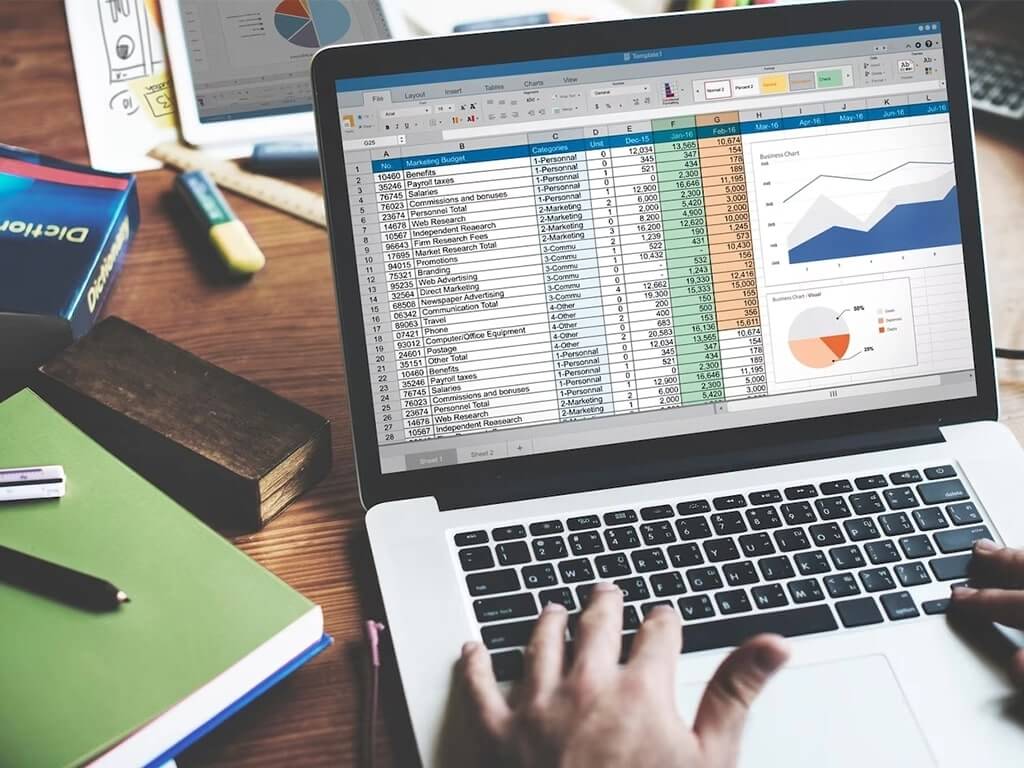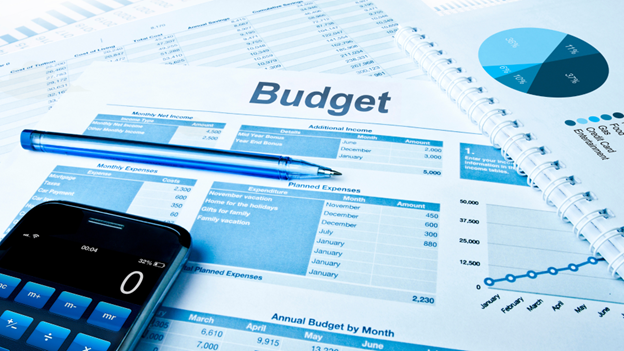Excel Be Tool for Establishing a Business Budget?
Excel can be a powerful tool for businesses of all sizes. In this article, you'll learn how to set up a business budget tool with Excel.

Budgeting is a critical aspect that can make or break a company’s success. Creating and managing a budget requires careful planning and a thorough understanding of your finances. Fortunately, modern tools such as business budget tool Microsoft Excel help establish a business budget.
According to recent statistics, about 63% of companies use Microsoft Excel for accounting purposes. It’s a powerful spreadsheet program that enables businesses to manage and analyse their financial data effectively.
This article explains how Excel’s advanced skills can establish a business budget. Excel training will improve your financial planning if you’re starting a business or an experienced entrepreneur. Keep reading for insights and practical tips to use Excel for your business budget.
What Is Microsoft Excel?
In business budgeting, Microsoft Excel is a software program that creates, manages, and analyses financial data. It provides several features and tools that establish a business budget. This includes customisable templates, formulas, and formatting options.
Excel allows users to create customisable budgets to meet their specific needs. Businesses can easily;
- Add and remove categories
- Update data
- Use formulas to perform calculations
- Analyse trends and data visualisation
Additionally, advanced Excel offers various analytical tools like charts and graphs. These help to identify patterns and make informed financial decisions.
Excel’s versatility and ease of use make it perfect for businesses of all sizes and industries. Using the best Excel training manuals will help you enter, organise, and manipulate data easily. This makes it easier to track expenses, income, and cash flow.
Therefore, you’ll require Excel training to exploit all features and tools where necessary. It would help to enrol your team in Excel training courses to meet your business needs and requirements. Better still, you can take all the courses or choose specific ones for Excel advanced skills.
How Can Excel Be a Business Budget Tool for Establishing a Budget?
After completing Microsoft Excel training, you’re set to plan your company’s budget. Here are ways advanced Excel can create a comprehensive and accurate budget:

1. Customisable Templates: A Key Feature of a Business Budget Tool
Customizable templates provide a framework for organising financial data and performing calculations. This can make tracking expenses easier, monitoring cash flow, and identifying areas where you can cut costs.
These templates come preformatted with commonly used budget categories and formulas. This saves time and helps you avoid errors to ensure a reliable budget.
Using customisable templates also offers budget templates specific to different industries, such as retail, manufacturing, or service-based businesses. These templates can help you identify your business’s most relevant budget categories.
Templates are customizable so that you can add or remove categories specific to your business. This allows you to create a budget tailored to your unique needs.
2. Data Organisation with a Business Budget Tool
According to IBM’s estimate, poor data costs a loss of $3.1 trillion. So how can you ensure quality data?
Data organisation helps businesses ensure quality data by avoiding costly errors and improving decision-making. It’s an essential aspect of establishing a business budget in Excel advanced. Organising your financial data in a structured manner creates a comprehensive budget. This accurately reflects your business’s financial position.
Excel training teaches you to categorise your expenses into different categories. This includes rent, utilities, payroll, marketing, and supplies. Doing this lets you identify where you’re overspending and adjust your budget accordingly.
Also, Microsoft Excel tracks your income and transactions from various sources, like sales, services, or investments. Tracking enables your budget to reflect in your revenue streams accurately. Better still, it ensures that your budget is up-to-date. What’s more?
Excel allows you to analyse your financial data to identify trends and patterns. With historical data, you can also use Excel to forecast your business’s financial future. This helps you make informed decisions about your business’s financial future and makes adjustments accordingly.
3. Data Visualisation in a Business Budget Tool
Data visualisation tools in Excel include charts and graphs. They help to identify trends and patterns in your financial data quickly. This allows you to make informed decisions about your budget and adjust where necessary.
Moreover, data visualisation lets you know where to cut costs. For example, a pie chart showing your expenses by category reveals where you are overspending.
A data visualisation tool promotes straightforward communication of your budget to others in your organisation. Visual representations of your data are easier for non-financial professionals to understand. This makes it easier to get buy-in from stakeholders.
Additionally, data visualisation sets and tracks financial goals for your business. For instance, a line chart showing your revenue over time tracks your progress toward your revenue targets.
Using data visualisation identifies opportunities for growth in your business. For example, a monthly chart showing the number of new customers acquired identifies where you were successful.
4. Formulas and Functions in a Business Budget Tool
You can use formulas like SUM and AVERAGE to calculate the total amount spent in a particular category. They also find the average monthly expenses for a specific expense type.
Still, formulas allow you to create custom calculations specific to your business needs. For example, you could create a formula calculating the cost per unit of a product or service.
Some formulas like TREND and FORECAST can predict future expenses based on historical data. This enables you to decide wisely about future budgeting.
Conversely, functions such as IF and VLOOKUP automate repetitive tasks. This includes categorising expenses or looking up vendor information.
Also, COUNTIF and SUMIF functions use specifications to analyse financial data by counting or summing data. For instance, use the COUNTIF function to count the number of transactions in a particular category.
5. Flexibility of a Business Budget Tool
Flexibility is crucial in using advanced Excel to establish a business budget. Excel flexibility allows you to create customised budget templates and forms that fit specific needs. It’s easy to add or remove columns, adjust formulas, and format cells to create a suitable budget template.
The flexibility also allows you to perform what-if analysis. This requires changing variables and assumptions in your budget. For example, you could change the interest rate or the revenue forecast to see how it impacts your budget.
Still, Excel’s flexibility can create multiple scenarios and compare them. For instance, create one scenario where you reduce expenses by 10% and another where you increase sales by 5%. Do this in any manner you like.
Excel also lets you update your budget as new information becomes available quickly. So, you can update your revenue forecast or add a new expense category in real time.
Finally, Excel advanced quickly integrates with other tools, like accounting software or financial planning software. This lets you import data and automatically update your budget with the latest financial information.
6. Accessibility Features
The accessibility in Excel is everything you need to plan your business budget. Excel is user-friendly, making it easy to navigate and use. So even if you don’t have advanced Excel skills, you can still create an accurate and effective budget.
Furthermore, Excel allows you to enter data quickly and easily, which is critical for a business budget. You can copy and paste data from other sources or import data from accounting or financial planning software.
Excel includes accessibility features like screen readers, high contrast modes, and keyboard shortcuts. These features allow people with disabilities to use Excel and create a budget quickly.
There are collaboration tools in Excel, such as shared workbooks, comments, and track changes. These tools enable multiple users to work on a budget simultaneously, saving time and improving accuracy.
You can also access Excel online. Working on your budget from anywhere with an internet connection is possible. This allows updating your budget in real-time, collaborating with others, and deciding using the latest financial information.
Conclusion
Excel offers everything you need to create an accurate and effective budget that helps you achieve your financial goals. With its intuitive interface and powerful features, advanced Excel creates a budget that fits your needs. It’s also flexible enough to adjust as your business grows and changes.
So, if you’re looking to establish a budget for your business, Excel is a tool you shouldn’t overlook. Excel advanced training allows you to manage your finances and make the most of your resources. Additionally, for businesses looking to enhance their social media strategy, understanding the best time to post on Facebook for business can complement your budgeting efforts by improving your online presence.



